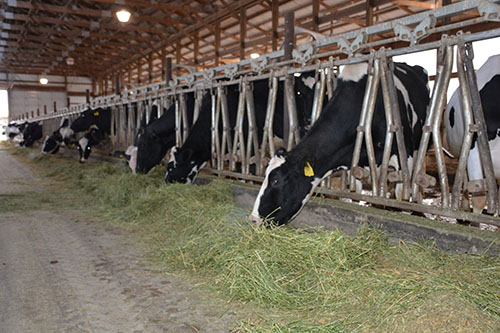
One topic of conversation at the Minnesota Herd Health Conference held in Bloomington, Minn., last week was blanket versus selective dry cow therapy.
"Blanket dry cow therapy has been preached since the 1960s," said Erin Royster of the University of Minnesota. While treating every cow with antibiotics at dry-off has become a norm, a recent push to reduce antibiotic use on farms has led some to wonder if treating all cows is necessary.
The goals of dry cow therapy are to treat existing infections and prevent new ones. Royster explained that if a farm chooses to use selective dry cow therapy and only treat some cows, they must be able to determine infection status at dry-off.
Royster mentioned that early research of selective dry cow therapy yielded poor results due to the selection criteria used and a lack of teat sealant. A more recent study at the St. Paul Campus Dairy relooked at selective dry cow therapy and found more positive outcomes.
University of Minnesota Ph.D. student Kruthika Patel explained that there has been a drop in mastitis incidence on today's dairy farms. That fact, along with on-farm culturing systems that can identify infected quarters faster and the availability of internal teat sealants, make selective dry cow therapy a viable option for some herds.
To evaluate effectiveness, 56 cows in the Minnesota study were assigned to either the selective dry cow therapy (SDCT) group or the control group, which received blanket dry cow therapy (BDCT). Cows in the SDCT group received antibiotics only in quarters that showed bacterial growth when cultured two days before dry-off. Cows in the BDCT group were given dry cow treatment in all four quarters. Every cow received internal teat sealant.
At the end of the study, there was no significant difference between the two groups in the presence of intramammary infections at calving, cure during dry-off, new intramammary infections between dry-off and calving, and risk for a clinical mastitis event between dry-off and 30 days in milk. A clear benefit of the SDCT group was a reduction in antibiotic use by almost half (48 percent).
Patel explained that this was a pilot study using a small group of cows, so more research needs to be done. The results were promising, though, and this data will be used to apply for a grant to complete a larger multi-herd study in the future.

The author is an associate editor and covers animal health, dairy housing and equipment, and nutrient management. She grew up on a dairy farm near Plymouth, Wis., and previously served as a University of Wisconsin agricultural extension agent. She received a master's degree from North Carolina State University and a bachelor's from University of Wisconsin-Madison.











